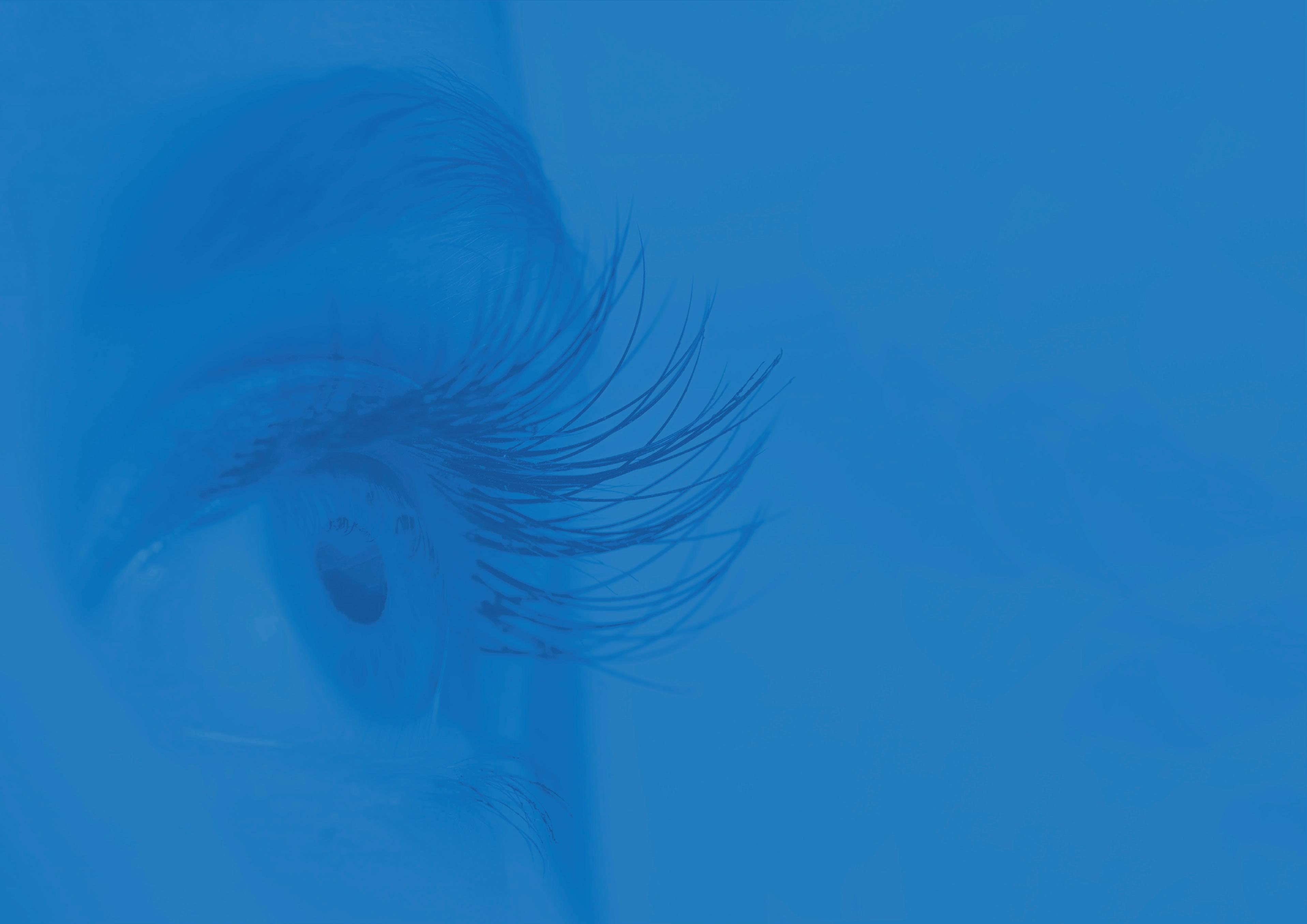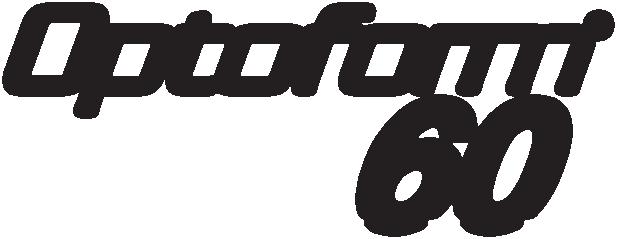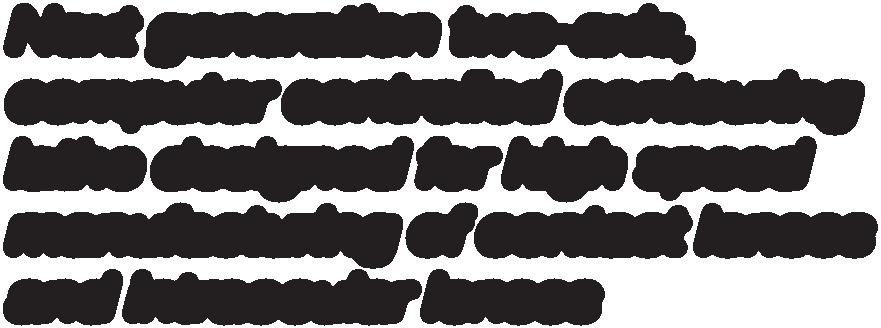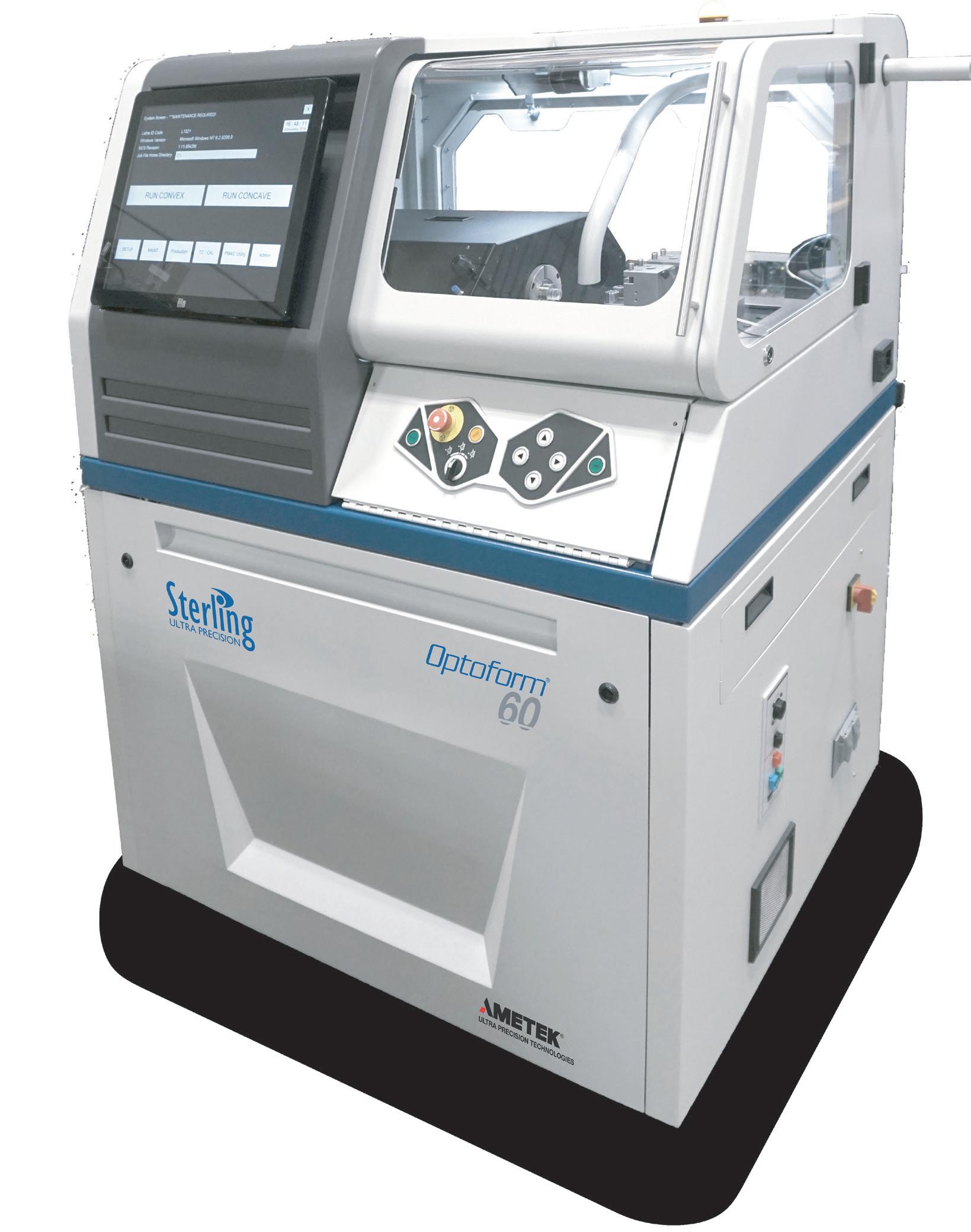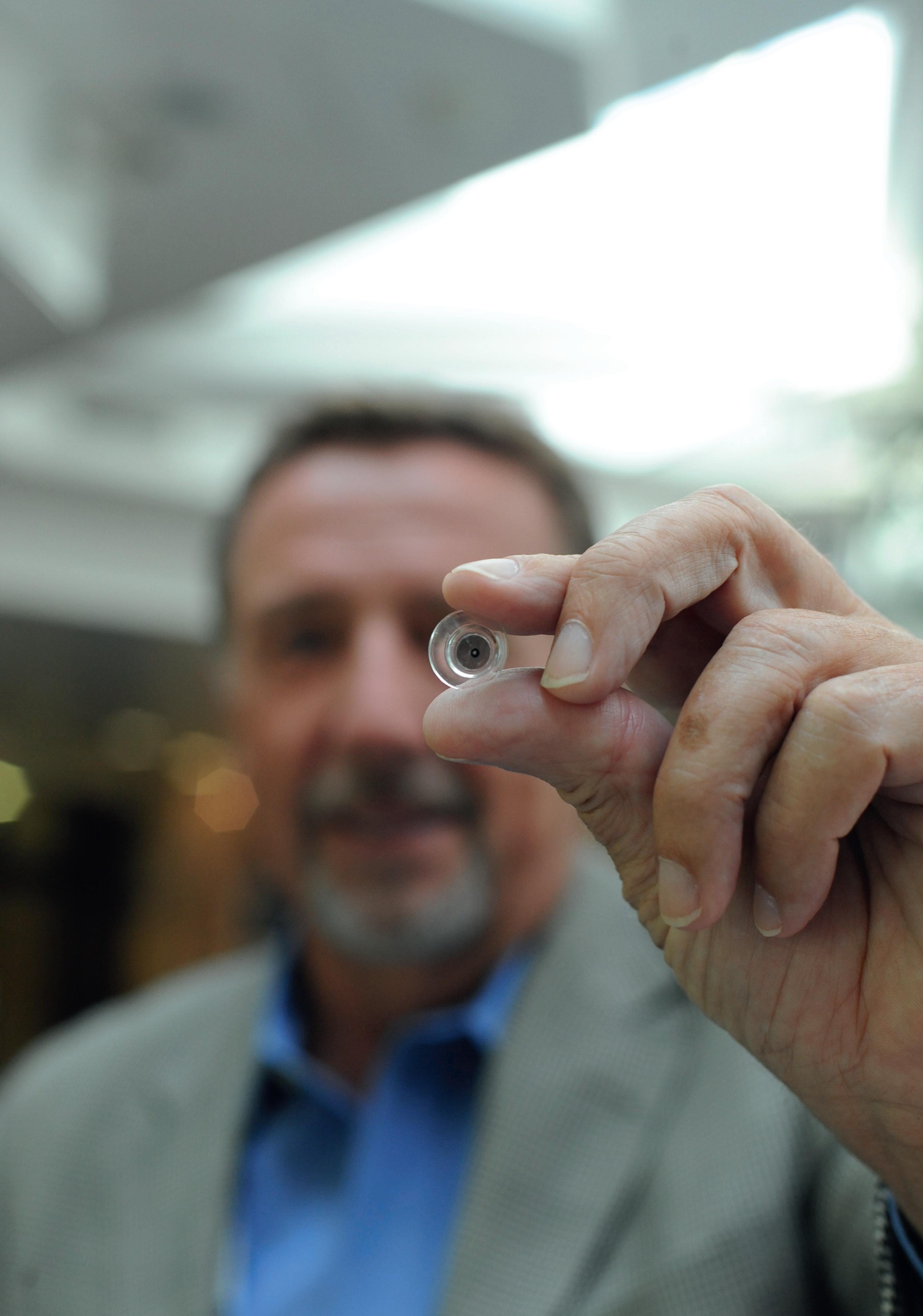
10 minute read
With Jerry Legerton – Extended reality for vision impaired
eMacula extended reality for the visually impaired –
Interview with Dr. Jerome Legerton, Innovega
Advertisement
What would happen if you lost most of your sight, if things you are used to recognising were suddenly no longer visible? Finding your way around in everyday life would become increasingly difficult. This is not only a problem obvious in the pandemic, where visually impaired people are dependent on help anyway. It affects many people in various stages of visual impairment. A new device, glasses in combination with contact lenses, can improve recognition and vision to a certain extent. But beyond that, it pushes open a new door: Welcome to the world of virtual, augmented or mixed reality. By Silke Sage
Photo: Silke Sage
GlobalCONTACT: Who are emacula's target groups? Legerton: The eMacula system is categorized as extended reality eyewear. Extended reality (XR) includes virtual reality (VR), augmented reality (AR), and mixed reality (MR). Each system provides visual content to the user in different ways. The eMacula system enabled by the iOptik contact lens may be used for all three forms of XR. VR employs an occluded display in glasses or a headset. The real world is blocked by the display. Even so, the content or media on the display can be very high resolution, bright, and in a full color gamut. The first target group for the eMacula VR system will be the visually impaired. The advantage and benefit of the eMacula system over other VR systems for the visually impaired is the wide field of view in combination with lightweight and stylish eyeglass form factor. The software that takes the image from an onboard camera or from a mobile phone or PC enhances the image for the visually impaired. The first enhancement is to enlarge the image in proportion to the best corrected visual acuity. The user can control the image enlargement, brightness, contrast and color rendering. The wider the field of view of the system, the greater the ability to enlarge the image and still see enough of the image. Small field of view systems cause a loss of context when the image is enlarged. In other words, the user sees less of what they want to view even though the image is large enough to resolve.
GlobalCONTACT: How does the use of the devices work? Legerton: Innovega designed two systems for the visually impaired that we call ambulatory and non-ambulatory. The ambulatory system or mobile system can be worn in all settings and is expected to be used by the visually impaired for driving in the same manner as bioptic telescopes. The ambulatory eMacula system delivers variable magnification, brightness, contrast and scene manipulation while the bioptic telescope is fixed for each of these. The non-ambulatory system is designed for stationary activities like reading, desk work, and vocational tasks. The field of view can be larger than the ambulatory system and thereby allow for greater magnification while maintaining more image context. These same systems may be used by fully sighted individuals. There is value in the ambulatory system for anytime-anywhere information. The system may be used for spectator activities to eliminate the need to use binoculars while also allowing simultaneous media feed to enhance the enjoyment of the spectator event. Sports training or performance enhancement is anticipated with the ambulatory system as well. Sensors and information content systems are already in use for cycling. These data may be presented in the eyewear instead of on a display on the handle-bars. The cyclist can see the information without looking away from the path. Occupational enhancement, also called enterprise, is already a significant target for XR headsets and eyewear. The eMacula systems may be employed in many industries to allow for anytime-anywhere information, direction and instruction. The contact lens enabled system brings the advantages and benefits of wide field of view, high resolution, full color gamut, low latency, greater brightness, and potential to be less power hungry.
GlobalCONTACT: How can I imagine the view through the glasses? Legerton: AR and MR employ a transparent display technology in glasses that allows the user to see the display content and the real world at the same time. AR presents the image in the transparent display without being registered to the real world. The image simply is viewed simultaneously like an insect on a windshield is seen simultaneously with the real world when driving. MR employs greater technology to register the image with the real world to allow it to be manipulated in size, position and action with the real world. MR presents far greater challenges with the need for additional sensors, electronics, processing and power consumption. MR is regarded as one of the most difficult technology challenges of this decade. We see the added challenge of making the MR display eyewear useful while making it usable with regard to weight, comfort and appearance. This understanding supports the prediction that VR and AR systems will be adopted well before full MR systems.
GlobalCONTACT: On what technology is augmented reality achieved? Legerton: AR is achieved by way of image processing to micro-displays that are placed in a near eye location. There are three primary technologies: Waveguide, off axis projection which is sometimes called holographic, or beam combining by use of occluded micro-displays and some form of optical combiner. The goal in each case is to put an image in front of the line of sight of each eye in a pair of glasses or a headset.
GlobalCONTACT: The lens power is generated via the contact lens. Up to what prescription does the glasses/CL-system work? Are there limits, if so what are they? Legerton: The Innovega iOptik contact lens is similar to any disposable soft lens and the power limit is governed in the same manner as any molded soft lens.
GlobalCONTACT: How many smart glasses do you currently produce and who are your customers? Legerton: This question actually addresses our business model. Innovega is executing a licensing model wherein we are licensing our technology to contact lens partners and to display eyewear and application partners. We do not plan to produce or sell finished products.
GlobalCONTACT: When will the product be available, and where? Legerton: The first application is for the visually impaired. We are seeking FDA market clearance for the iOptik contact lens and then will follow with CE marking. The first markets will be North America, the United Kingdom and Europe.
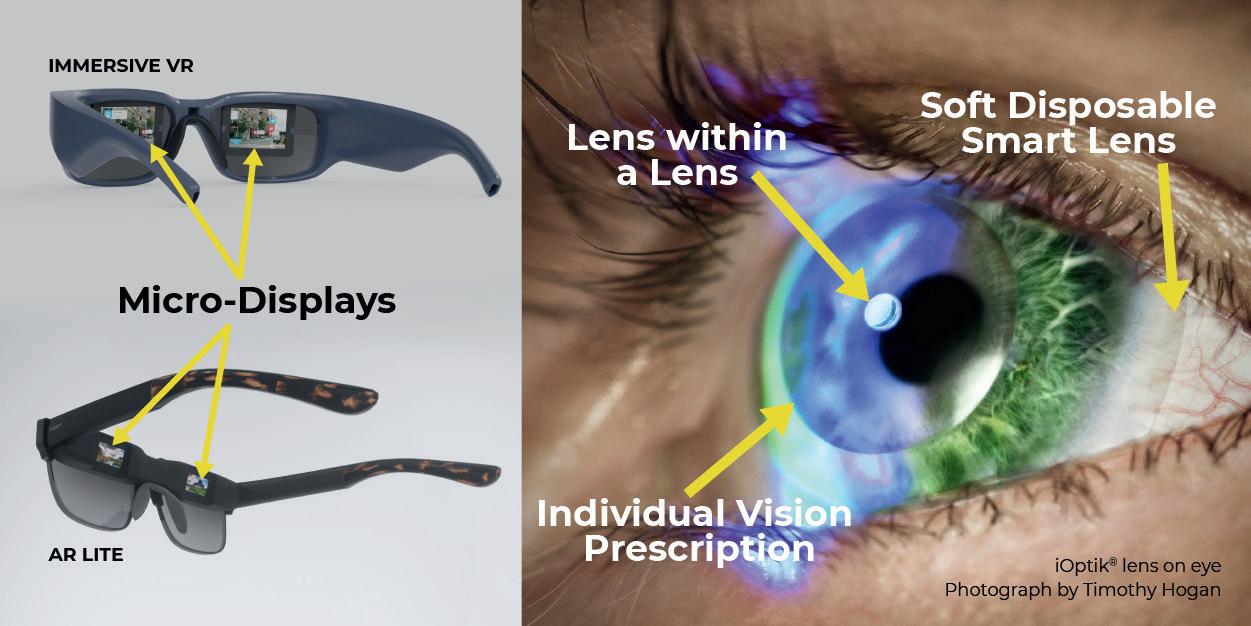
GlobalCONTACT: Where is production taking place? Legerton: We see value in the contact lenses being produced close to or in the market where they are distributed. Ideal licensees will be located close to the eye care practitioners who will be fitting the iOptik lenses in the same region.
GlobalCONTACT: What are the biggest challenges in production? Legerton: Our lens is in the category that we call component containing. The lens has an encapsulated two-state gas permeable light polarizing filter. We developed methods of transferring the filter to the lens substrate during molding. This method of manufacturing is more complex than single stage molding used for disposable soft lenses. We have ongoing process engineering to drive the cost out of the manufacturing.
GlobalCONTACT: Currently there is a product from Germany that uses a Fresnel lens integrated monocular into the spectacle lens. The lens power can be integrated directly (no matter what power) into the spectacle lenses. Why do you think the solution with a contact lens is better? Legerton: We clearly believe in what we call eye-borne optics. The lens power required to directly view a near eye display ranges from +60.00 to +85.00 diopters depending on the vertex distance of the display from the eye. The majority of users also need vision correction and the majority of those needing vision correction have some astigmatism and need for a cylindrical lens component. It just makes sense to us to put the refractive correction along with the micro-lens for viewing the display in a contact lens or intra-ocular lens. We also believe in providing users with binocular vision and fulfilling the global mission of eye care professionals to provide clear comfortable two-eyed vision at all distances. All of our reference designs and methods of fitting are directed to binocular vision and usual and customary correction of refractive error. We are pleased to see that other XR developers are thinking about refractive correction. We anticipate that XR will be another reason for wearing contact lenses since the placement of spectacle lenses behind an already heavy or bulky headset or display eyewear seems to exacerbate the comfort and appearance challenges that already exist. The Fresnel solution helps to keep the weight down. Visual noise must be avoided in all systems and we believe fully sighted consumers will demand excellent clarity.
GlobalCONTACT: How much does the unit weigh? Legerton: Our eyewear weight goal is to be less than 60 grams. There will be a constant push to achieve 45 grams and then 30 grams. The reality that today’s conventional eyewear is very light must be respected.
GlobalCONTACT: Who will distribute the glasses and contact lenses? Legerton: We are in discussions with a global distributor of products for the visually impaired. They will distribute the eyewear and the regional contact lens manufacturer will distribute the contact lenses to the eye care providers who fit them. North America and Europe have different channel economics and systems. The low vision specialist in the US is most often an independent practitioner or an employed practitioner in an institutional setting. The same individual will fit the iOptik contact lens and dispense the eMacula eyewear. It is ideal to have the two parts of the system delivered under the same roof.
GlobalCONTACT: Will the glasses be roadworthy? Legerton: The eyewear must be robust. The industrial design of the eyewear is a major development component in the same manner as the design of a mobile phone. Impact tolerance and heat dissipation are design requirements along with weight and power use reduction.
GlobalCONTACT: How can the product be arranged with data protection? Are there any hurdles here? Legerton: The software developers for each application follow the state of the art that is applied to other electronic devices. Efforts are made to employ connectivity that is contemporary with all electronic devices.
GlobalCONTACT: Does the device have to be equipped with its own (electronic) simcard or does it only use the connection to the smartphone. Which implies: It must be carried at all times? Also during sports? Legerton: We have reference designs for tethered eyewear and eyewear that has wireless connectivity. Keep in mind that a fundamental goal for the eyewear is to be lightweight and stylish. This usually means that it is best to put everything possible somewhere other than in the eyewear or work to significantly reduce what is called SWaP, size, weight and power. There is a rapidly growing group of folks who believe in the post mobile phone era. The 5G providers are all eager to move the telecommunications console to eyewear and away from mobile phones. The achievement of this vision will require significant minification of components. We believe consumers will see fully functional telecommunication eyewear at some point. Before that time, we see value in tethered eyewear in an effort to keep power and data sources off the eyewear to achieve the weight reduction and improved styling.
GlobalCONTACT: Thank you for this Interview!
Dr. Jerome A. Legerton: OD, MS, MBA, FAAO, Director of Innovega Practiced for 26 years prior to launching a successful career in contact lens development and commercialization; 57 issued U.S. patents, co-inventor of Paragon CRT contact lenses, the market leader for overnight corneal reshaping. Co-founder and former CTO and EVP of SynergEyes, Inc., the world leader in hybrid contact lenses, before joining Innovega to lead contact lens design and clinical and regulatory activities.
Advertisement
